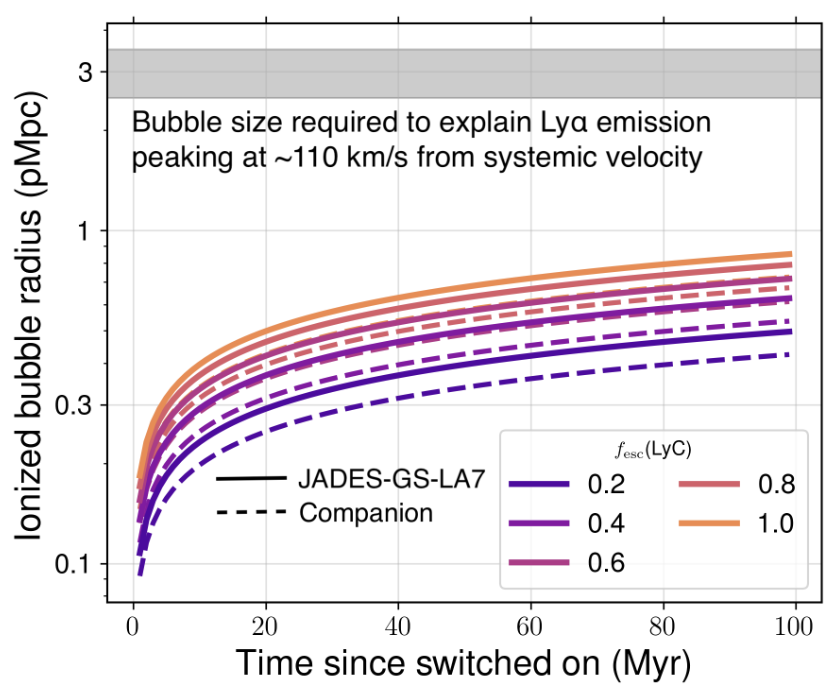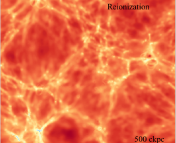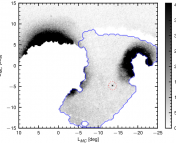Authors: Aayush Saxena, Brant E. Robertson, Andrew J. Bunker, Ryan Endsley, Alex J. Cameron, Stephane Charlot, Charlotte Simmonds, Sandro Tacchella, Joris Witstok, Chris Willott, Stefano Carniani, Emma Curtis-Lake, Pierre Ferruit, Peter Jakobsen, Santiago Arribas, Jacopo Chevallard, Mirko Curti, Francesco D’Eugenio, Anna De Graaff, Gareth C. Jones, Tobias J. Looser, Michael V. Maseda, Tim Rawle, Hans-Walter Rix, Bruno Rodríguez Del Pino, Renske Smit, Hanna Übler, Daniel J. Eisenstein, Kevin Hainline, Ryan Hausen, Benjamin D. Johnson, Marcia Rieke, Christina C. Williams, Christopher N. A. Willmer, William M. Baker, Rachana Bhatawdekar, Rebecca Bowler, Kristan Boyett, Zuyi Chen, Eiichi Egami, Zhiyuan Ji, Erica Nelson, Michele Perna, Lester Sandles, Jan Scholtz, Irene Shivaei
First Author’s Institution: University of Oxford, University College London
Status: Submitted to A&A [open access]
The term “Dark Age” might conjure an image of filthy peasants, strange women lying in ponds distributing swords, and an Islamic Golden Age. The field of cosmology, however, has a Dark Age as well. In the first few hundred million years after the release of the Cosmic Microwave Background radiation, there was very little light being produced. But by the end of the Universe’s first billion years of life, it was populated by an impressive array of stars and galaxies, which can be studied by high resolution telescopes like JWST. The energizing light from these galaxies knocked electrons off of the atomic hydrogen gas which surrounded them, giving rise to the scientific term for this era: the epoch of reionization. Today’s paper investigates one of the galaxies helping to drive this process, shedding new light on the early universe.
This galaxy is old…very old…
The galaxy in question, catchily named JADES-GS-z7-LA, was originally found as part of Hubble’s Ultra Deep Field, and was believed to be at redshift 6.9, meaning it existed about 770 million years after the Big Bang. However, Hubble observations were unable to absolutely confirm the galaxy’s age; the best way to do that is to take its spectrum, which is exactly what the authors of today’s paper did using JWST’s NIRSpec instrument.
When electrons transition from higher to lower energy states within an atom, they emit light at specific wavelengths depending on the characteristics of the atom in question. This emission shows up as bright peaks in a galaxy’s spectrum, like those shown in Figure 1. But as that light travels through an expanding universe, it gets stretched into longer and longer wavelengths, so by comparing the spectrum we observe to a theoretical model we can see how long the light has been traveling, and thus estimate the galaxy’s age. This particular galaxy’s spectrum shows a redshift of 7.278, or about 720 million years since the Big Bang, even earlier than was previously thought!

The Universe at redshift 7.3 was experiencing an epoch of reionization–newly formed galaxies were slowly ionizing the neutral hydrogen gas around them, producing expanding bubbles of energizing radiation that slowly began to overlap with each other until the Universe was almost entirely ionized. However, it is still unclear exactly when and how quickly this process occurred, since such early galaxies are difficult to see with high resolution. Luckily, JWST is revolutionizing our ability to investigate this era. By analyzing so-called Lyman α emission–an important tracer of galactic hydrogen produced when an electron transitions from the first excited state to the ground state of neutral hydrogen–today’s authors were able to determine the size of the bubble of ionized gas around JADES-GS-z7-LA.
A bubble of unusual size

Despite the presence of a companion galaxy that the authors found using JWST’s NIRCam instrument, the bubble of ionized gas in this region of space is still unusually large. JADES-GS-z7-LA and its companion are both relatively faint, and while JADES-GS-z7-LA appears to be releasing high energy ionizing radiation by actively forming stars, the companion seems to have already finished most of its star formation. Neither galaxy should be capable of producing a bubble of ionized gas larger than around 1 megaparsec (Mpc) in radius. However, in order to explain the brightness of the observed Lyman α emission, as well as the difference between the redshift of the Lyman α and the overall redshift of the galaxy, hydrogen in the intergalactic medium surrounding the galaxy must be ionized out to a radius of at least 3 Mpc.
Because the bubble of ionized hydrogen today’s authors observe is too large to have been produced by these two galaxies alone, they believe that what they are seeing is a time at which these bubbles have already begun to overlap with each other. This means that by the time that these galaxies existed at redshift 7.3, reionization had progressed to the point that we are no longer seeing individual bubbles of ionized gas, but overlapping regions. The exact sources and timing of reionization are an open question in astronomy, and today’s results are an important step towards a greater understanding of the evolution of the early Universe—helping to shed light on the cosmic Dark Ages.
Astrobite edited by: Cole Meldorf
Featured image credit: ESA/PACS/SPIRE/HOBYS




